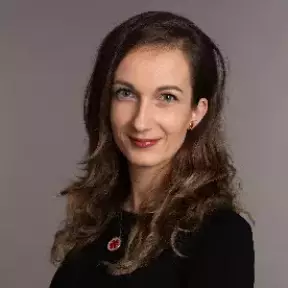Let´s explore new virtual clinical cases on acute medicine. There you can find all virtual cases created during this school year 2017/2018.
Acute coronary syndrome
Marie Pavlušová, MD, Kočí Daniela, Kořínková Martina
Acute coronary syndrome (ACM) is one of the most frequent causes of death in our population. Common risk factors such as bad eating habits, obesity, hypertension, diabetes mellitus and smoking are responsible for its development. This algorithm aims at right diagnostics of ACM as well as STEMI and non-STEMI differentiation which is necessary for the right choice of treatment.
Anaesthesia of myotonia congenita Becker
Martina Kosinová, MD, PhD, Hrušková Lucia, Janoušová Tereza
Myotonia congenita Becker is an autosomal recessive disease, non-dystrophic myotonia. The worldwide prevalence of myotonia congenita is about 1:100,000. It is linked to mutations in CLCN1, the gene encoding the skeletal muscle chloride channel. The mutation in Becker’s disease leads to reduced flow of chloride ions during repolarisation leading to sustained muscle contraction. The reduced chloride conductance of the mutated chloride channels in Becker’s myotonia causes hyper-excitability of the muscle fibre membrane leading to bursts of aberrant action potentials. The algorithm will lead you through the anesthesia in patient suffering from this disease from preoperating examination to his awakening.
Brain death and organ transplantation
Peter Kľúčovský, MD, Návoj Michal, Šaffo Matúš
Brain death is an irreversible extinction of all brain functions including brainstem functions despite of the working cardiovascular system or other organs. The organ donor can be living human or the organ can be taken from the body of dead one. The condition is free and voluntary donor decision. The dead donor is in most cases a person, whose brain damage leads to its death, which has to be medicaly very precisely examinated and confirmed by objective screening procedure.
Neuromuscular Blockade Monitoring
Hana Harazim, MD, Tereza Musilová, Adam Predáč
Neuromuscular blocking agents (NMBA) are drugs with potentially life threatening effects for the patient. Therefore the monitoring of neuromuscular transmission during the operation is done according to the Czech Society of Anaesthesia, Resuscitation and Intensive Care and it is considered to be a standard procedure in patients care. The objective evaluation of the depth of relaxation gives the anaesthesiologist a valuable information that aids in his decision making about the immediate care. The main goal of this algorithm is to introduce the audience to the basic informations and options about neuromuscular monitoring and furthemore, to point to its importance in bringing the best possible care to the patient.
Peripartum life-threatening haemorrhage - 2018
Assoc. Prof. Petr Štourač, MD, PhD, Eliška Moráňová, Ivo Štrýgl
Peripartum life-threatening hemorrhage is defined as quickly increasing blood loss, which is clinically estimated at 1500 ml and more and which is connected with development of clinical and/or laboratory signs of tissue hypoperfusion.
Severe respiratory infection in a child
Assoc. Prof. Petr Štourač, MD, PhD, Vladislav Nezval, MD, Pavel Brančík, Sylvia Matulová
The airways are most often affected by infectious inflammatory diseases and these are usually not serious. A more severe course may be expected mostly in children, the elderly and patients with a compromised immune system. In this algorithm we encounter a severe course of infectious disease of the airways in a child and learn the therapy options.
Water rescue III
Michal Vondráček MD, Zbyněk Šimek, Simona Tuhrinská
In the Czech Republic, swimming is very popular and frequent sport. Warm weather and summer days sprout the swimmers from the pools to the open waters. Swimming in open waters carries not only the joy, but also risks, and a lot of experienced swimmers can end up drowning for the first time. This algorithm will guide you through the water rescue technique from the beginning until the end.
Anaesthesia in elderly patients
Marek Kovář, MD, Hana Gottwaldová, Jiří Valenta
Who is considered as an “eldery patient” nowadays? Statisticaly it is age of 65 years. There were 1 760 000 citizens of this age group in the Czech republic at the 31th December 2012, which is nearly 17 % of our population. The pensionable age is 66.5 years. It is claimed that 22 % of all surgeries are among the eldery patients regarding the same date and this number is rising. Higher risk of perioperative morbidity is connected with higher age and so there are important specifics of anesthesia in eldery patients. What kind of specifics?





